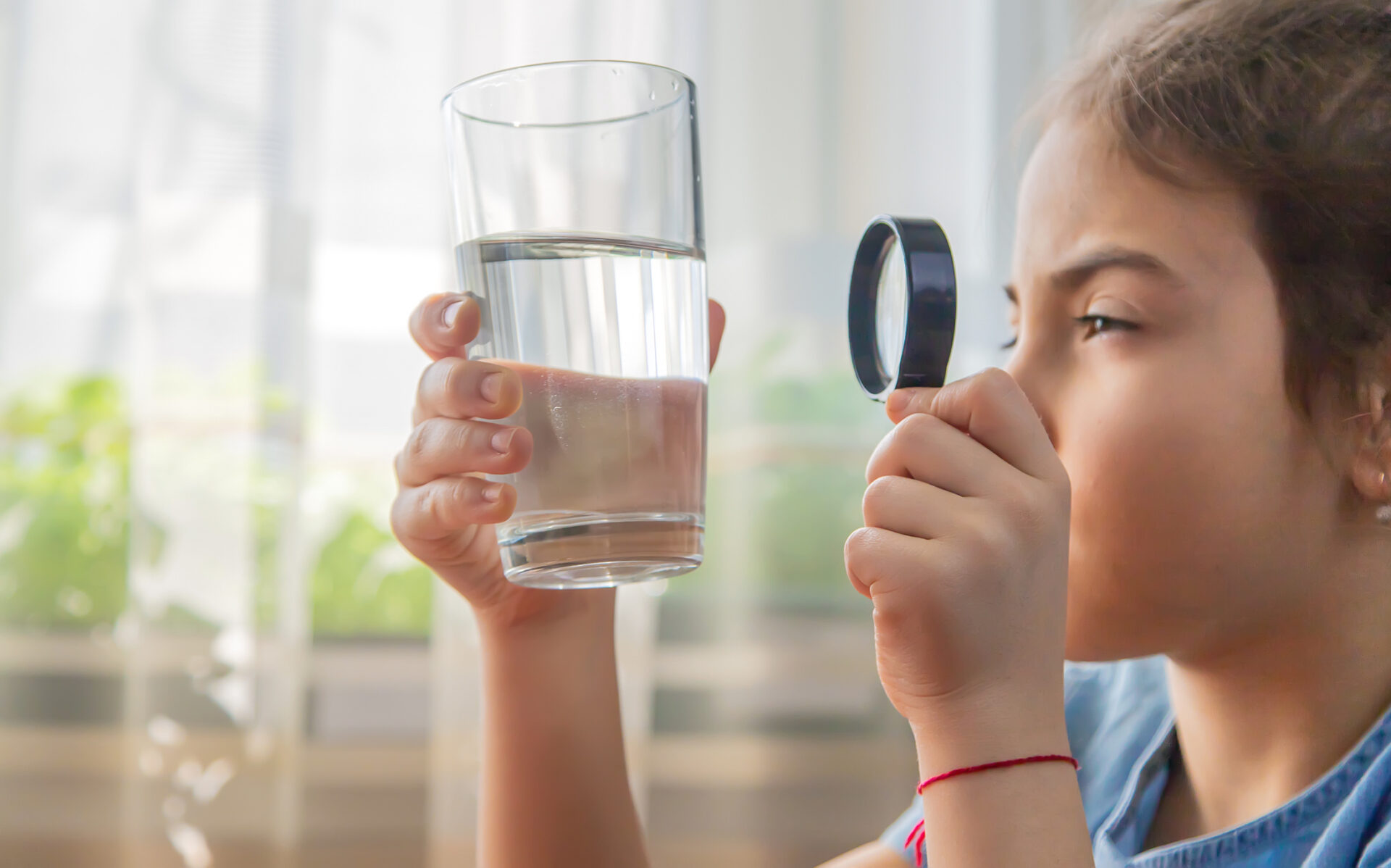You’ve probably heard the buzz about two sneaky pollutants showing up in our water: PFAS (aka “forever chemicals”) and microplastics. They sound similar, but they’re not the same and both can stick around longer than we’d like. So, what are they, why should you care, and how do you keep them out of your home? Let’s dive in.
Microplastics: Tiny Pieces, Big Impact
What are they?
Microplastics are teeny plastic bits, smaller than five millimeters, that come from broken-down plastic items or are made for things like cosmetics and cleaning products.
What’s in them?
They’re built from tough polymers like polyethylene and polypropylene, which means they don’t break down easily. Once they’re out there, they’re out there for decades.
Where do they come from?
- Plastic waste breaking down
- Microbeads in beauty products1
- Synthetic fibers from clothes
- Industrial manufacturing
Where do they end up?
Pretty much everywhere, oceans, rivers, soil and can even be in the air you breathe. They travel far and often end up in wildlife, which means they can sneak into our food chain2.
Why does it matter?
Researchers have found microplastics in human lungs and blood3. Possible health concerns include:
- Inflammation
- Hormone disruption
- Chemical exposure from pollutants they carry
Visit the World Health Organizations website to learn more about the potential health impacts from microplastics.
Are they regulated?
Some progress is happening, like bans on microbeads in cosmetics1 and global efforts to cut down on single-use plastics4.
PFAS: The Chemicals That Won’t Quit
What are they?
PFAS are man-made chemicals used to make products water- and grease-resistant – think non-stick pans, waterproof jackets, and food packaging. They’re called “forever chemicals” because they don’t break down easily in nature or in your body.
Why so stubborn?
PFAS have carbon-fluorine bonds, which are super strong and hard to destroy. Common PFAS include PFOA, PFOS and GenX chemicals1.
Where do they come from?
- Non-stick cookware
- Water-repellent clothing
- Food packaging
- Firefighting foam
- Industrial processes
Where do they go?
They move easily through water, contaminating drinking supplies2 and building up in soil and living organisms.
Why should you care?
PFAS exposure has been linked to:
- Higher cholesterol
- Immune system issues
- Hormonal changes
- Increased risk of certain cancers2
Are they regulated?
The EPA has set health advisory limits for PFAS in drinking water2, and some states have even stricter rules.
Ways to Help Kick PFAS and Microplastics Out of Your Water
The best defense? Water filtration. See below for a great way to get started when you’re looking to add filtration to your home:
Step 1: Test Your Water
- Book a free water test with a local expert. They’ll check your tap and recommend the right filter for your home.
- Check your local water quality report. Public water systems in the United States are required to provide a water quality report. These reports provide a guide on the source and treatment of your water as well as the levels of chemicals or contaminants. Use the EPA’s website to find out more about your water.
Step 2: Pick the Right Filter
The key to choosing the right water filtration system is understanding what’s in your water. Whether your home uses city water or a private well, there are effective filters designed to target specific contaminants.
Filtration systems can help reduce exposure to harmful substances like lead, chlorine, cysts, PFAS and microplastics, offering meaningful health benefits for you and your family.
If you’re looking to protect your household from PFAS or microplastics, explore the recommended solutions below and take a step toward safer, cleaner water.
- HomeShield Whole House Water Filter: Certified to target tough contaminants like PFAS*, with internally validated chlorine reduction — delivering cleaner, healthier water from every tap in your home
- InterFlo IF-14 Water Filter: This under sink water filter reduces over 99% of microplastics, making it a powerful choice for cleaner, safer water
*HomeShield is certified to reduce the following PFAS substances: PFNA, PFOA, PFOS, PFHpA, PFHxS.
Extra Tips to Lower Exposure
- Swap single-use plastics for reusable alternatives
- Look for PFAS-free labels on products
- Support policies that reduce plastic waste and regulate PFAS
- Share what you know—awareness matters
Bottom Line
PFAS and microplastics might be invisible, but they could be all around. Microplastics come from our plastic habits, while PFAS hide in everyday items. The good news? You can take control with smart choices and the right filtration system.
Ready to make a change? Schedule your free water test today and start enjoying cleaner, healthier water.
References
- U.S. Environmental Protection Agency (EPA). “PFAS Explained.” https://www.epa.gov/pfas/pfas-explained
- EPA. “Drinking Water Health Advisories for PFOA and PFOS.” https://www.epa.gov/sdwa/and-polyfluoroalkyl-substances-pfas
- National Institutes of Health (NIH). “Microplastics and Human Health.” https://www.ncbi.nlm.nih.gov/pmc/articles/PMC9494273
- UNEP. “Plastic Pollution: Microplastics in the Environment.” https://www.unep.org/resources/report/plastic-pollution
- Science Advances. “Detection of Microplastics in Human Blood.” https://www.science.org/doi/10.1126/sciadv.abq0850


